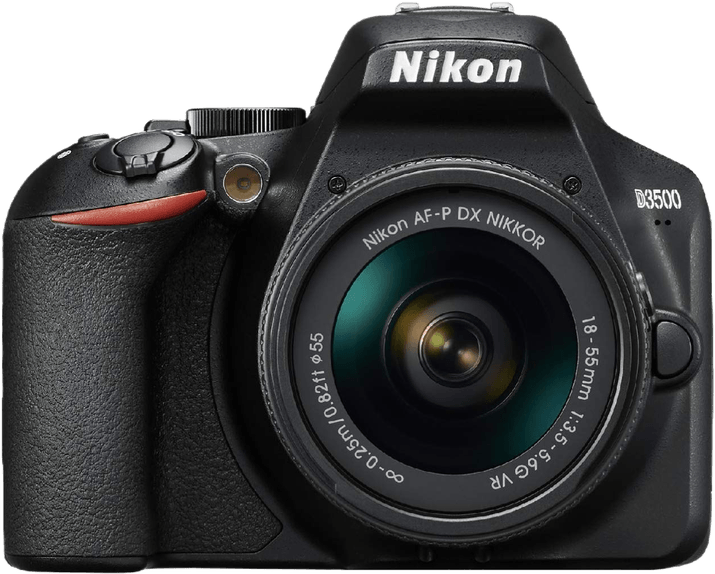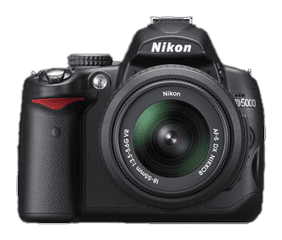Nikon D3500 vs D5000 Comparison
Nikon D3500

Nikon D5000

The Nikon D3500 emerges as the winner with a score of 61/100, compared to the Nikon D5000‘s score of 41/100. Both cameras share similarities as DSLR models, released in 2018 and 2009 respectively, with launch prices of $499.95 and $730.
The Nikon D3500 surpasses the D5000 in terms of size and weight, measuring 124 x 97 x 70mm and weighing 615g (1.36lbs), making it more compact and portable. On the other hand, the Nikon D5000 is slightly larger at 127 x 104 x 80mm and lighter, weighing 590g (1.30lbs). Despite the D5000’s lighter weight, the D3500’s overall better performance and compactness give it an edge in this comparison.
Considering these factors, the Nikon D3500 proves to be a more efficient and convenient choice for photographers, while the Nikon D5000 may still hold some appeal due to its lighter weight.
Nikon D3500 vs D5000 Overview and Optics
The Nikon D3500 triumphs over the Nikon D5000 in optics with a score of 65/100, compared to the D5000’s 45/100. Both cameras share common specifications such as a CMOS sensor, APS-C sensor size, Nikon F lens mount, and a lack of image stabilization.
The Nikon D3500 has a significant advantage in megapixels, boasting 24 compared to the D5000’s 12.3. This difference allows for larger and more detailed images to be captured. Additionally, the D3500 has a faster shooting speed of 5, while the D5000 only offers 4. This means the D3500 can capture more images in a shorter amount of time, which is especially useful for action shots or fast-paced events. The D3500 also benefits from a superior processor, the Expeed 4, which contributes to faster image processing and better overall performance. Lastly, the D3500 has a higher DXOMARK score for its sensor at 87, indicating better image quality compared to the D5000’s score of 72.
On the other hand, the Nikon D5000 has a slight advantage in its lens mount, using the Nikon F DX mount, which offers a wider range of lens options specifically designed for crop sensor cameras like the D5000. This can provide more flexibility and versatility for photographers in choosing lenses for their needs.
Taking these factors into account, the Nikon D3500 outshines the Nikon D5000 in terms of optics, image quality, and performance. The higher megapixel count, faster shooting speed, and superior processor make it a better choice for photographers seeking improved image quality and speed. However, the D5000’s lens mount advantage may appeal to those who prioritize lens flexibility and versatility.
Nikon D3500 vs D5000 Video Performance
The Nikon D3500 outperforms the Nikon D5000 in video capabilities, scoring 56/100 compared to the D5000’s 49/100. Both cameras share common video specifications, such as having a built-in microphone and allowing manual exposure control. However, the D3500 surpasses the D5000 in key areas, making it the better choice for video recording.
One significant advantage the D3500 holds over the D5000 is its max video resolution. The D3500 can shoot Full HD video at 1920×1080, whereas the D5000 is limited to Standard HD at 1280×720. This difference results in the D3500 producing higher quality, more detailed footage. Furthermore, the D3500 offers a max video frame rate of 60fps, double the D5000’s 24fps. This allows for smoother motion capture and better slow-motion capabilities in the D3500.
On the other hand, the D5000 does hold one advantage in its video capabilities: built-in time-lapse functionality. This feature allows users to create time-lapse videos without additional software or equipment. However, this single advantage does not outweigh the superior resolution and frame rate offered by the D3500.
Taking all factors into account, the Nikon D3500 is the clear winner in video capabilities. With its higher max video resolution and frame rate, it provides better overall video quality and performance. While the D5000 does offer built-in time-lapse functionality, this feature alone is not enough to make up for its shortcomings in other areas. Therefore, those prioritizing video capabilities should opt for the Nikon D3500.
Nikon D3500 vs D5000 Features and Benefits
The Nikon D3500 outperforms the Nikon D5000 in features with a score of 54/100 compared to 34/100. Both cameras share some common specifications, such as the lack of a touchscreen, flip screen, GPS, and WIFI. However, the D3500 surpasses the D5000 in other aspects, contributing to its higher feature score.
The D3500 boasts a larger screen size of 3 inches, compared to the D5000’s 2.7 inches. Furthermore, the D3500’s screen resolution is significantly higher at 921,600 dots, while the D5000 only has 230,000 dots. This means that the D3500 provides a clearer and more detailed display for users. Additionally, the D3500 has Bluetooth connectivity, which the D5000 lacks. This allows for easier file sharing and remote control of the camera.
On the other hand, the D5000 does not have any significant advantages over the D3500 in terms of features. Both cameras have their limitations, but the D3500’s improved screen and Bluetooth capability give it the edge.
Considering these factors, the Nikon D3500 is a better choice for photographers who value a larger, higher-resolution screen and Bluetooth connectivity. While the Nikon D5000 does not offer any notable advantages, it may still be suitable for those who do not prioritize these specific features. Ultimately, the Nikon D3500’s superior feature score reflects its enhanced capabilities and user experience.
Nikon D3500 vs D5000 Storage and Battery
The Nikon D3500 outperforms the Nikon D5000 in storage and battery, scoring 48 out of 100 compared to the D5000’s 27. Both cameras share similarities in storage, as they both have one memory card slot and accept SD and SDHC memory cards. However, the D3500 also supports the SDXC format, giving it an advantage in storage capacity.
The D3500’s battery life is significantly better, offering 1550 shots per charge, while the D5000 only provides 510 shots. Additionally, both cameras use different battery types, with the D3500 using the EN-EL14a and the D5000 using the EN-EL9a. Neither camera has USB charging capabilities.
Although the D5000 scores lower in storage and battery, it does not have any advantages in this area compared to the D3500. The Nikon D3500 is the clear winner in terms of storage and battery performance, offering greater storage capacity and longer battery life for users who require extended shooting sessions or increased storage options.
Nikon D3500 vs D5000 – Our Verdict
Are you still undecided about which camera is right for you? Have a look at these popular comparisons that feature the Nikon D3500 or the Nikon D5000:
